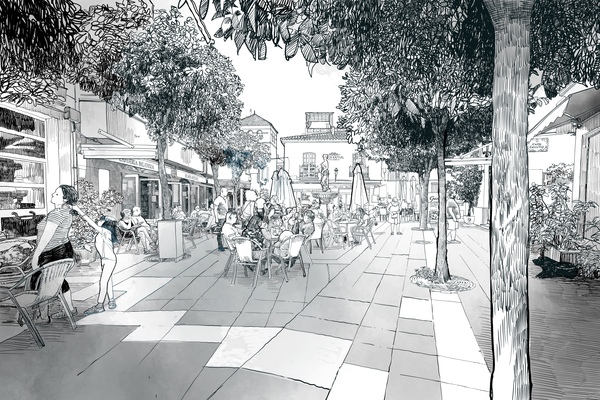Candidate: Estepona
Location: Spain
Category: The European City of the Year Award
Year: 2023
Other finalists in this category: Amersfoort, Netherlands (winner) and Exeter, England
Judges' comments:
“Estepona is recognised nationally as a city where outstanding leadership and good governance has rapidly produced long-standing transformation. Everyone has a sense of safety, belonging, and opportunity, and it is clear that investment in public spaces and functions have revitalised the city for existing residents and created long-term social and economic value. The ‘Garden of the Costa del Sol’ initiative in particular has given Estepona a distinctive character through new planting and paving – one part of how the city has been transformed into an authentic and family-orientated place with an emphasis on quality and culture.” - Tony Duggan AoU, European City Co-Lead Assessor
Introduction
Estepona is a town and municipality in southern Spain. Located in the province of Málaga, Andalusia, and its district covers an area of 137 square km, covering a fertile valley with a mountainous area dominated by the Sierra Bermeja. It is a popular year-round holiday destination having two EC Blue Flag beaches, a modern sports marina with many tapas bars and restaurants. The original, white-walled town centre contains shops and picturesque squares.
This area dates from prehistoric times, the name ‘Estepona’ having Moorish origins was captured from the Moors in 1457. A church was built over what had been the town mosque, and the town grew around it by 1502, having 25 Christian families resettled from northern Spain and received its first charter. Although governed as a district of Málaga until 1729, Philip V of Spain then granted its own charter. At the beginning of the 20th century, Estepona had 9,000 residents, mostly farmers and fishermen.
The San Luis castle dates from the 15th century when Queen Isabella I ordered it built to protect the town against the Moorish invaders. Most of the narrow streets and small, one-storey, houses were built in the 18th and 19th centuries, and until the mid 1950s many had no utilities or services. Since then, many have had a second storey built and services and utilities added. The population of Estepona was 14,000 in 1963 and it is from the 1960s onwards that most development has taken place. These are mostly 4 to 5 storey apartment blocks or hotel complexes, outside the historic core, with a ring road to the north of the town as the main access route.
Thumbnail illustration of Estepona by David Rudlin AoU, Artist-in-Residence









